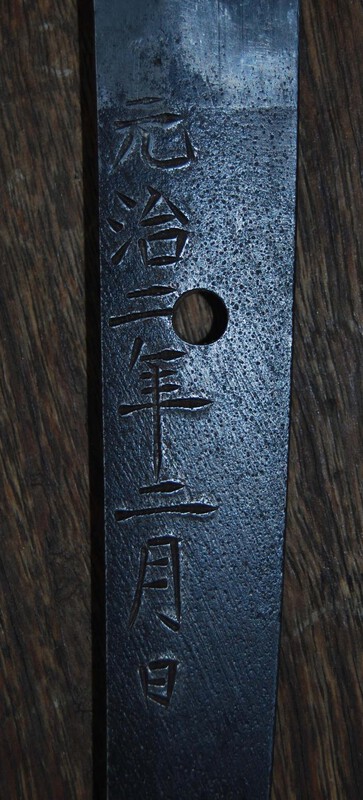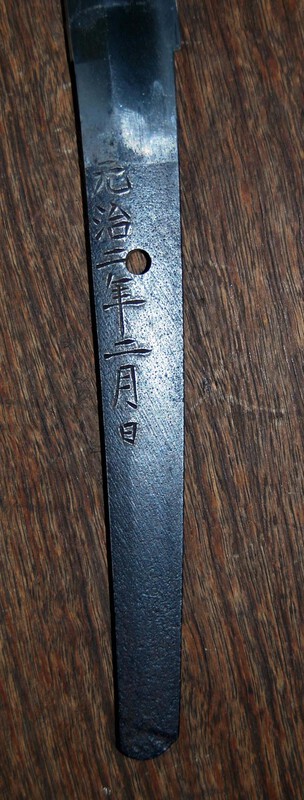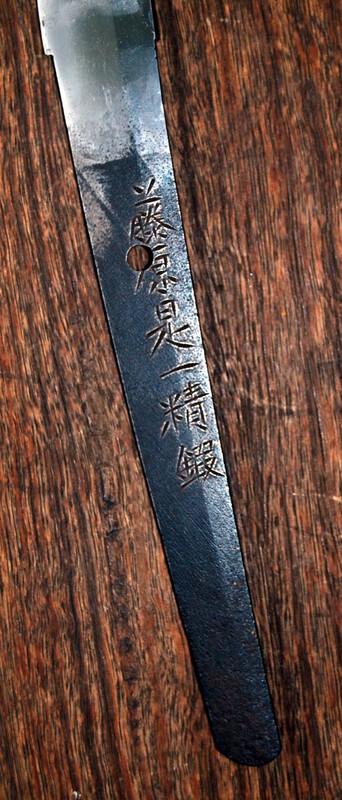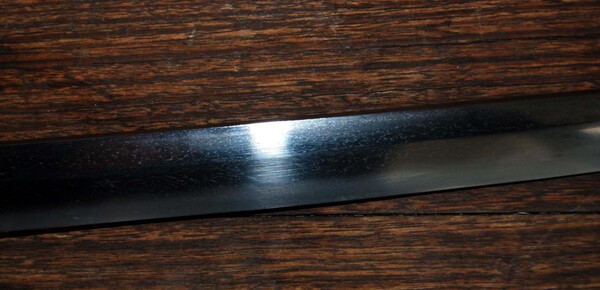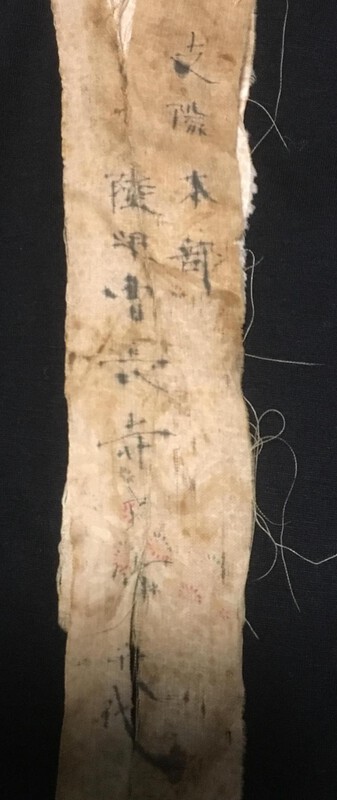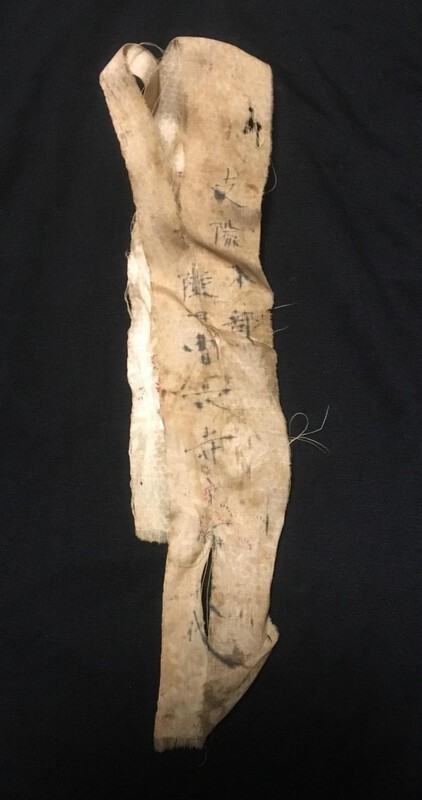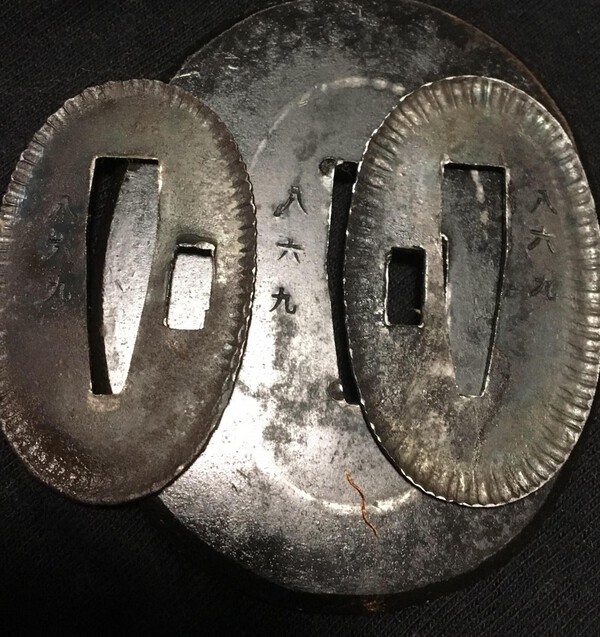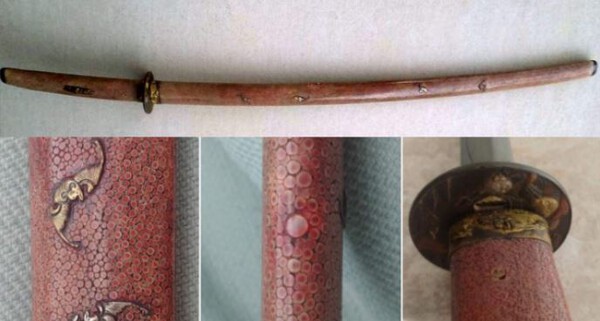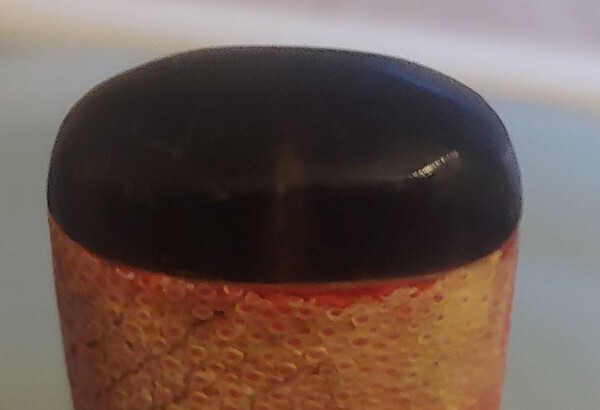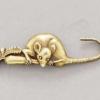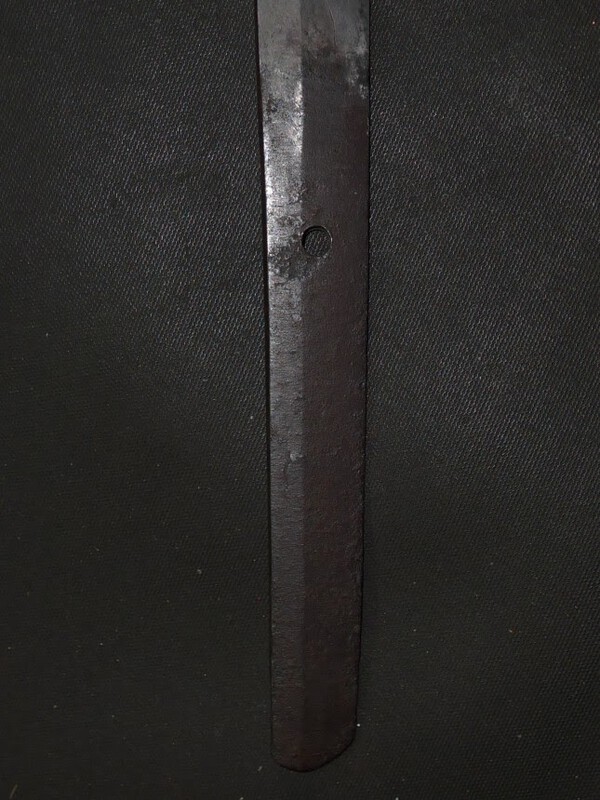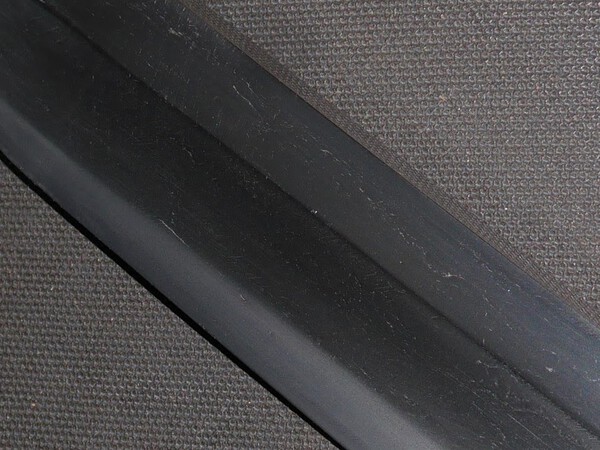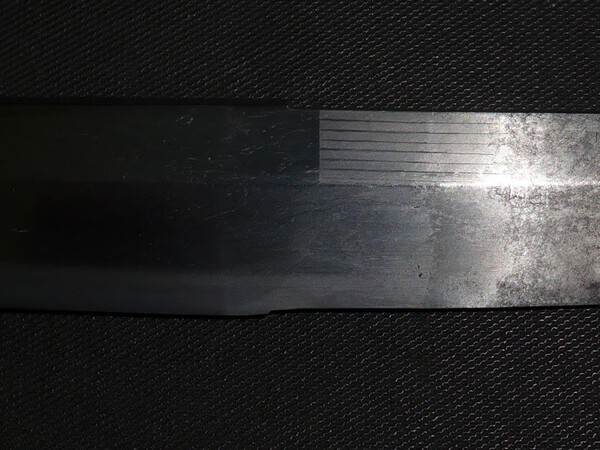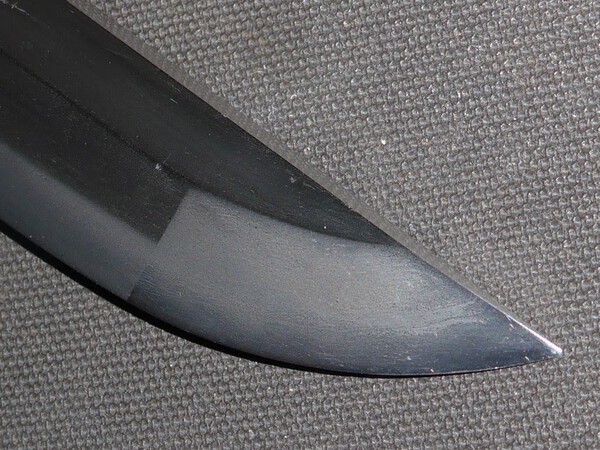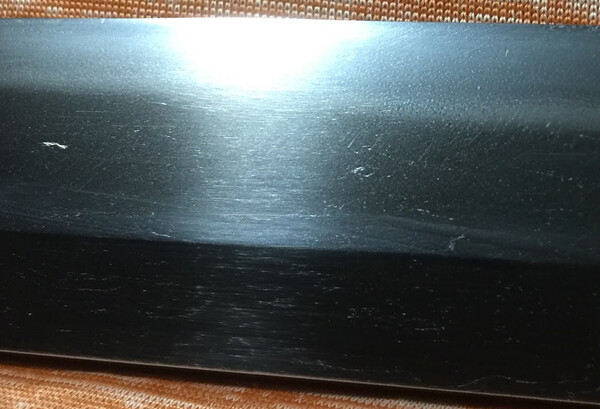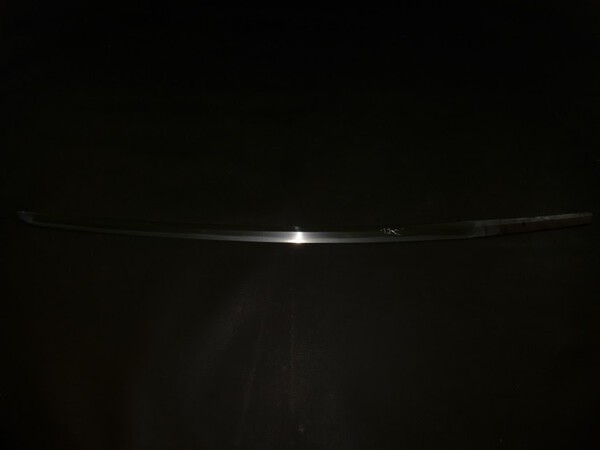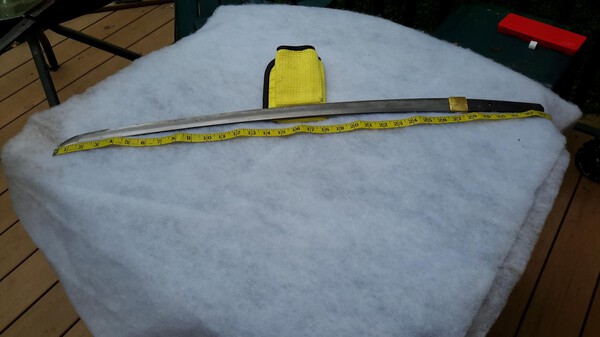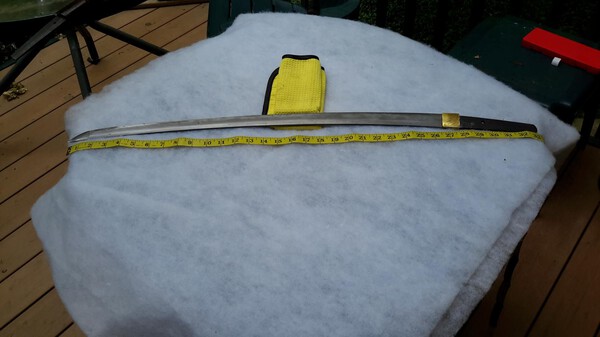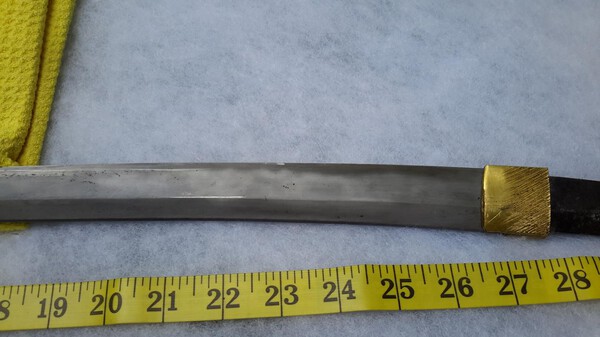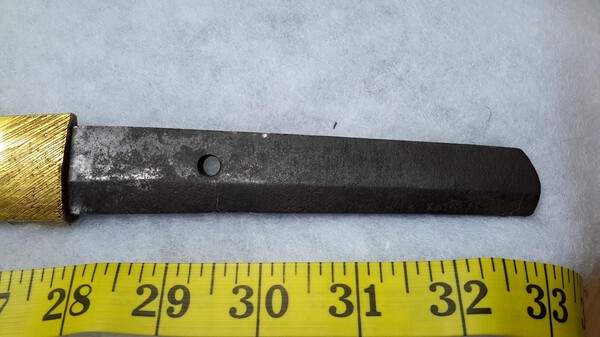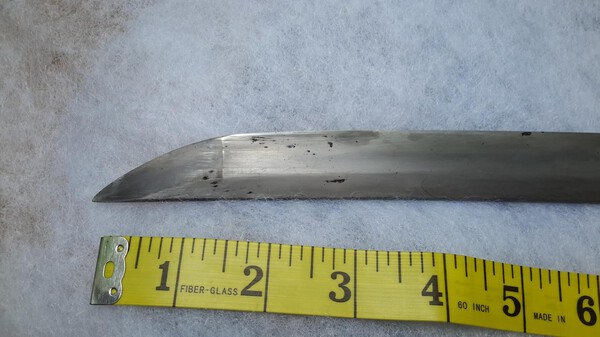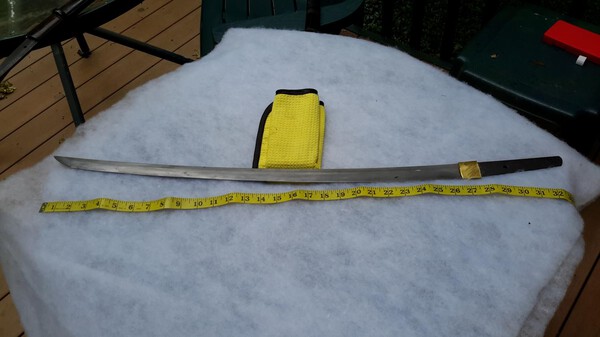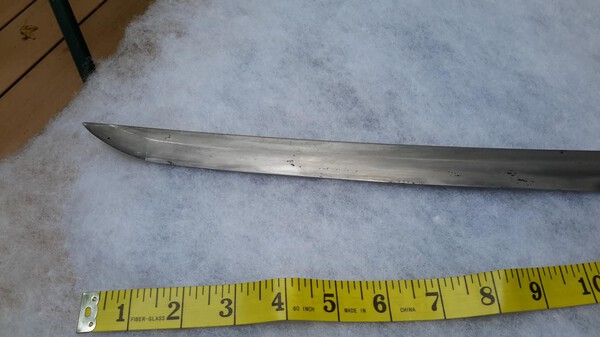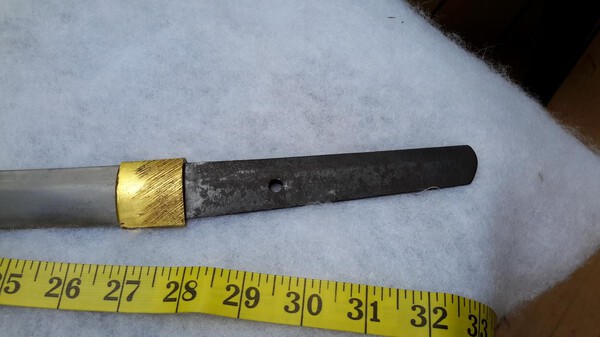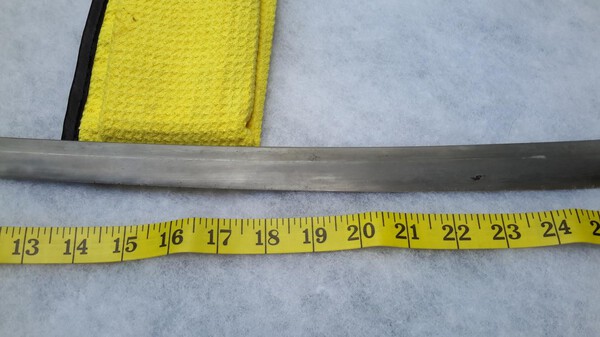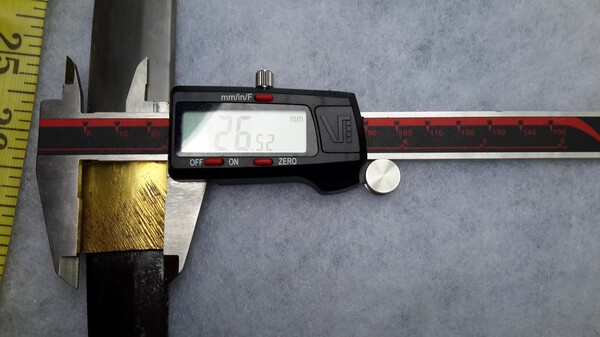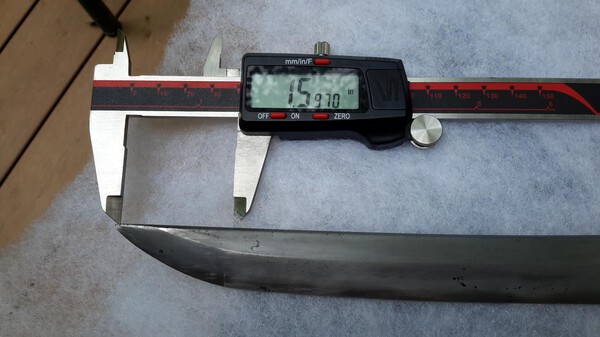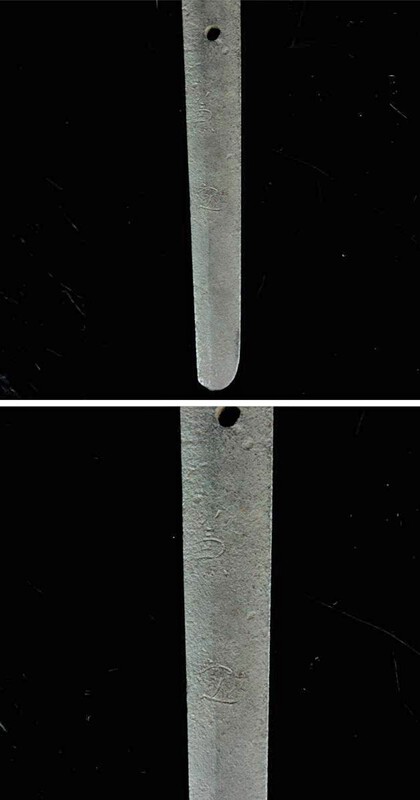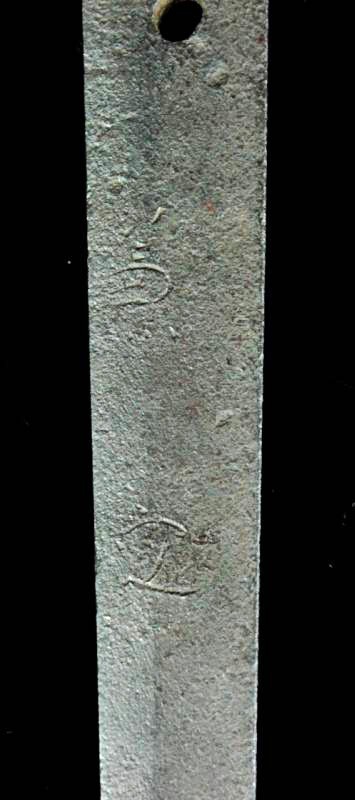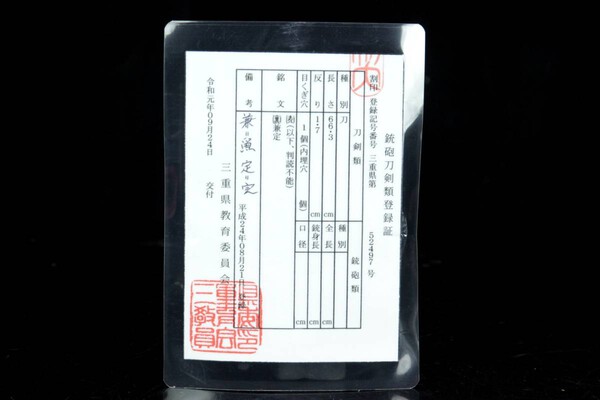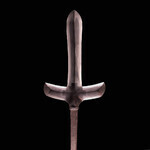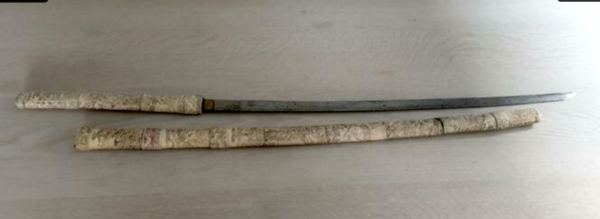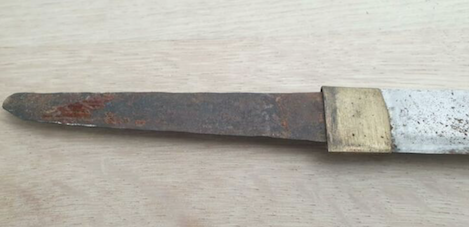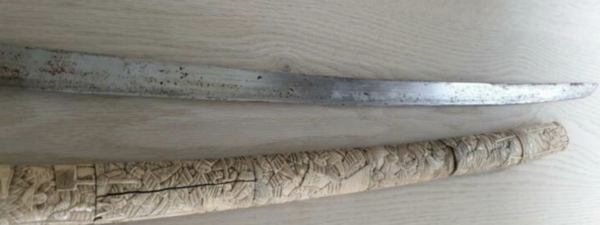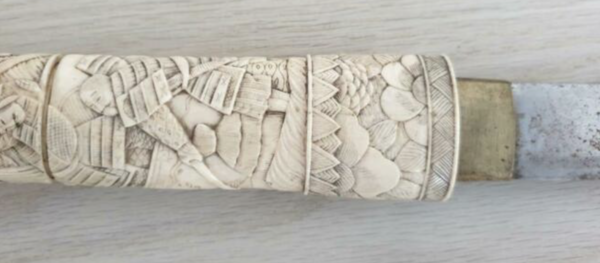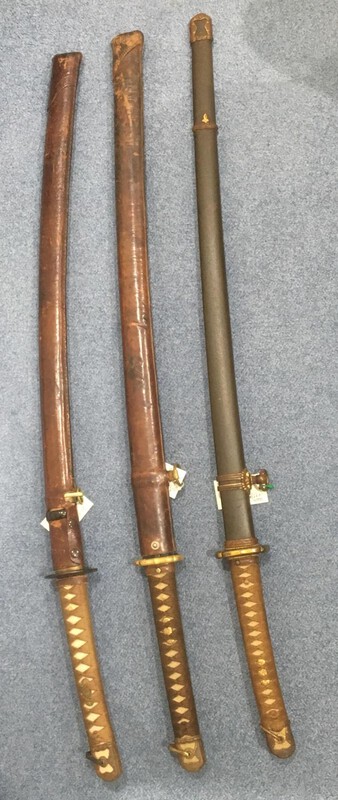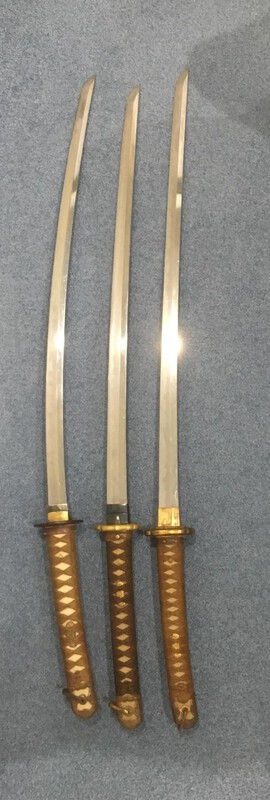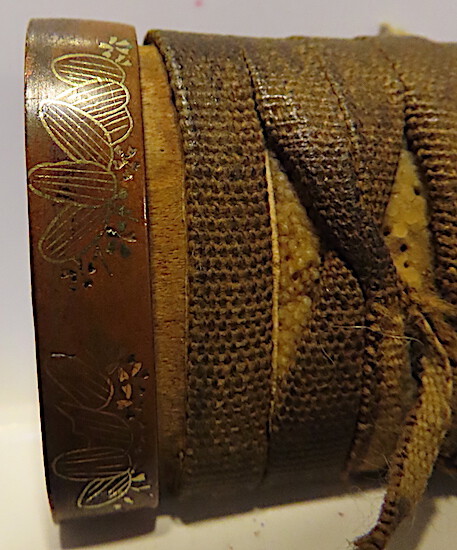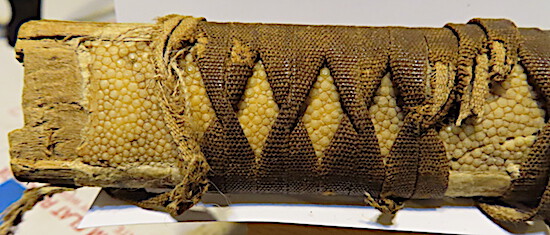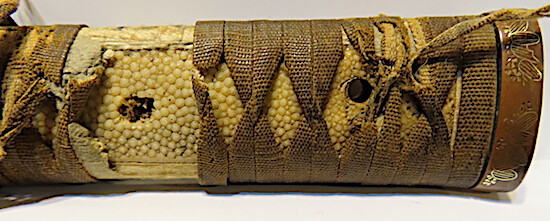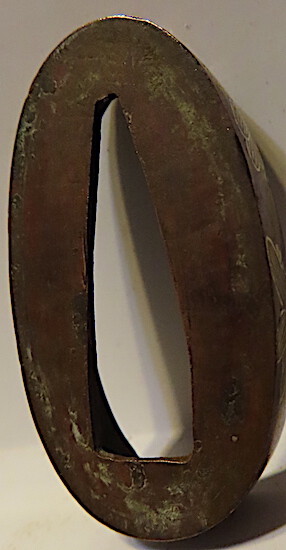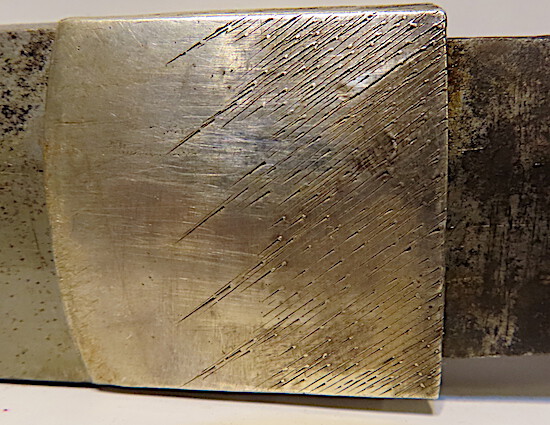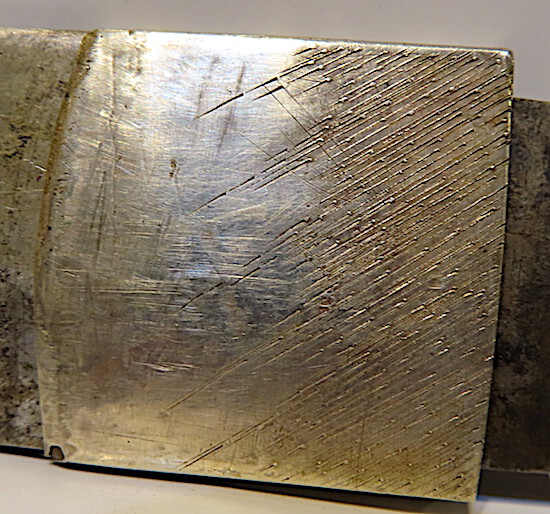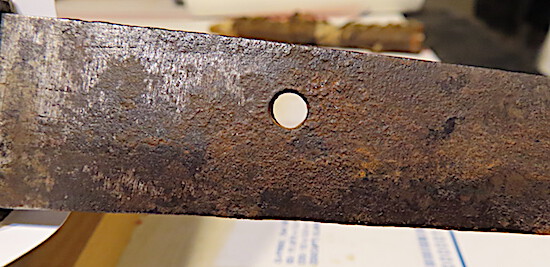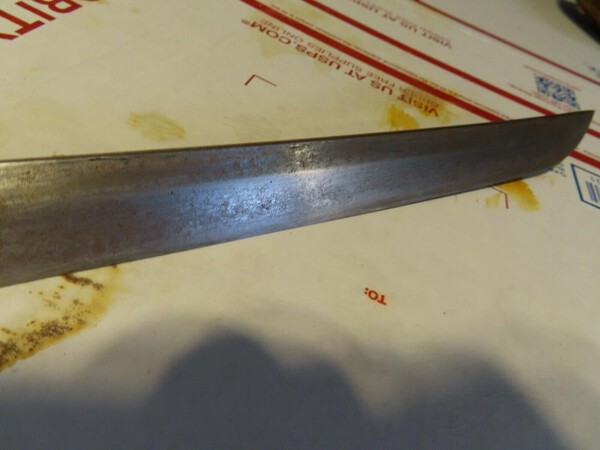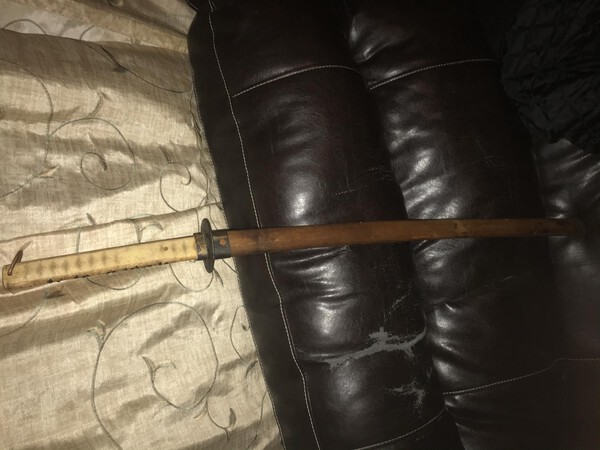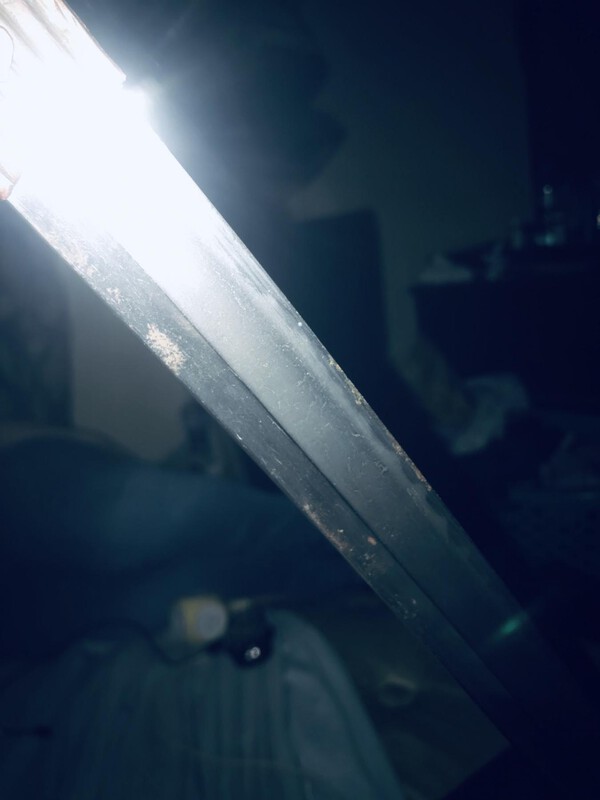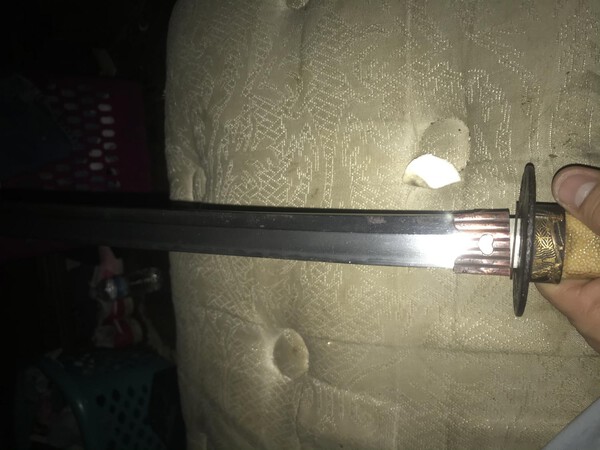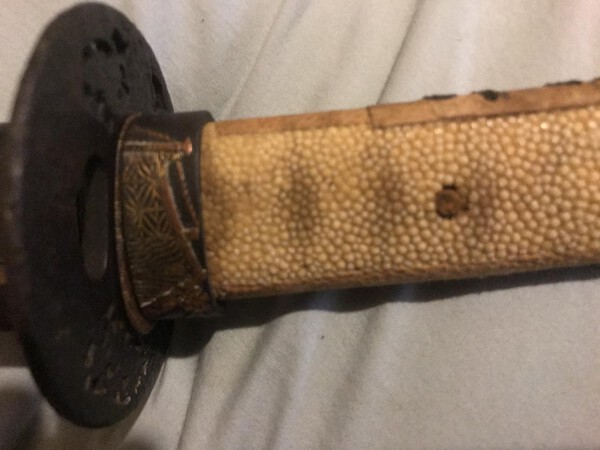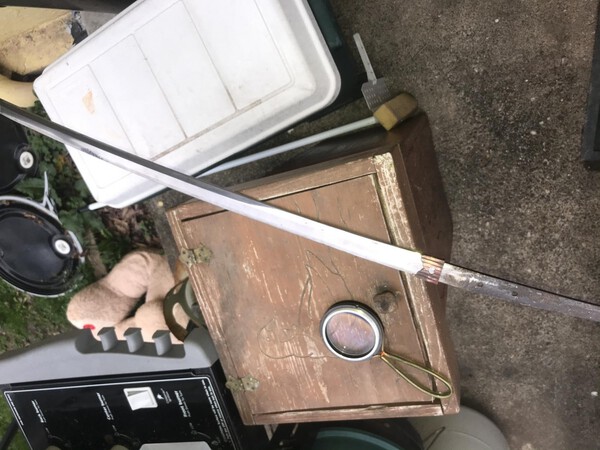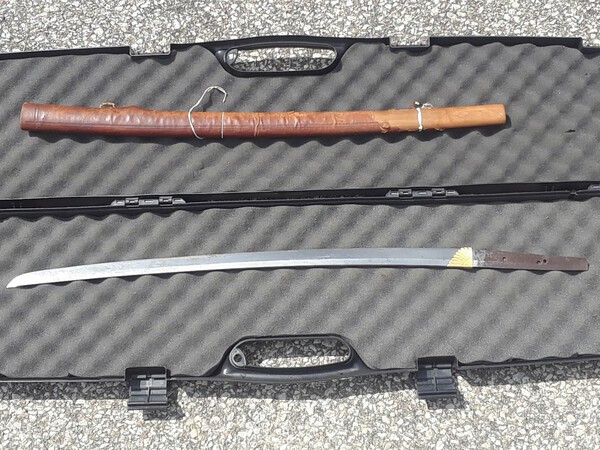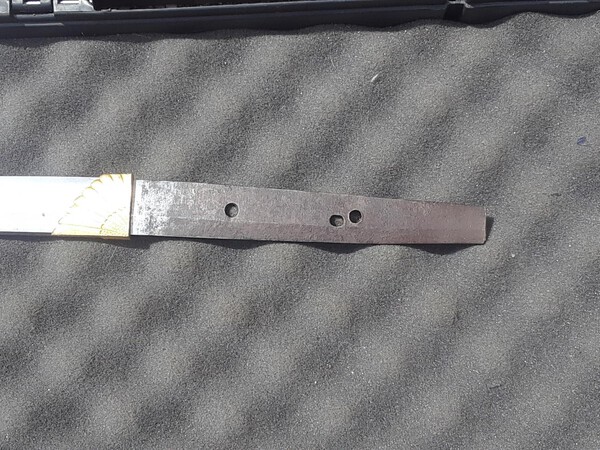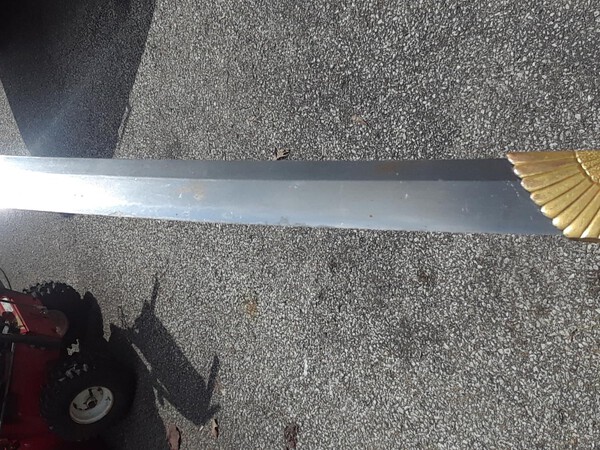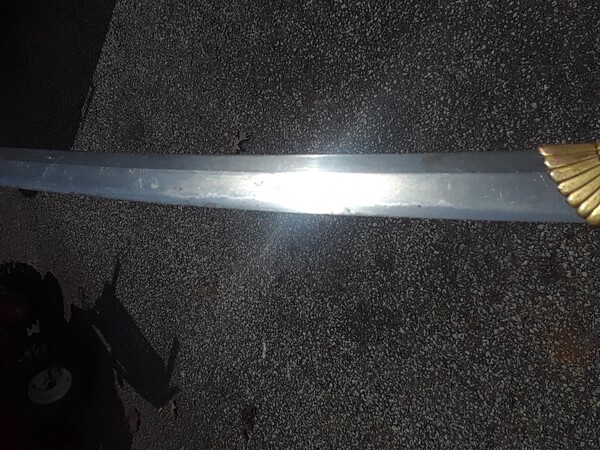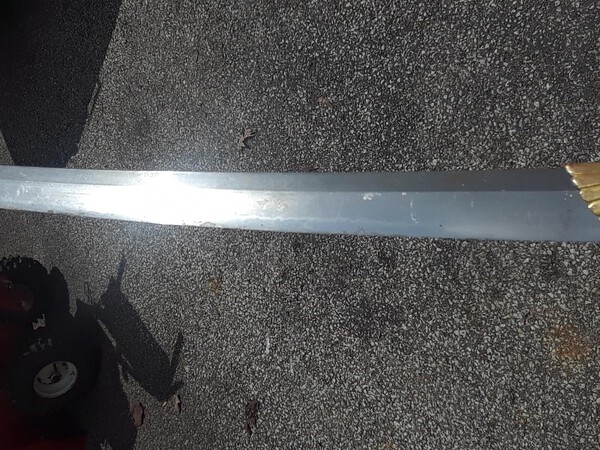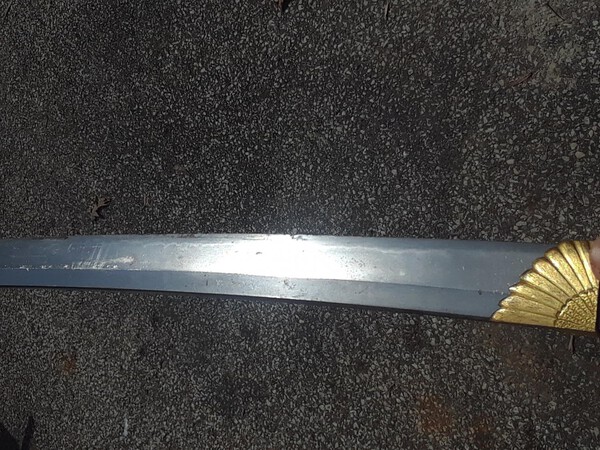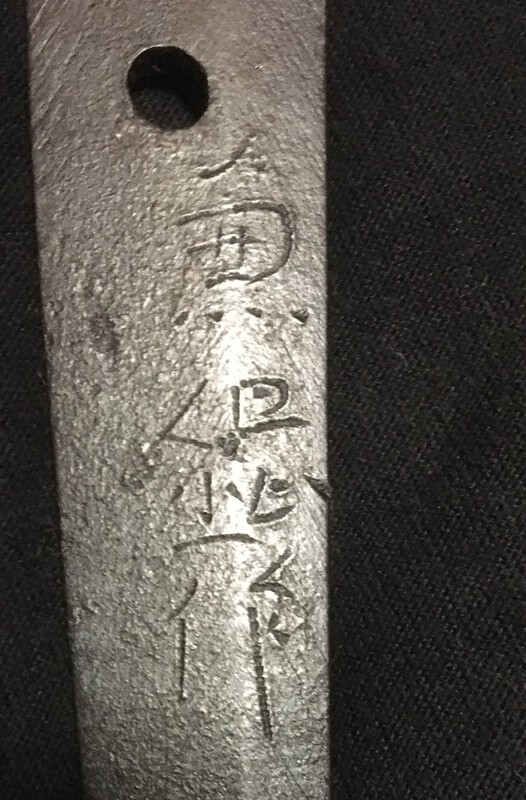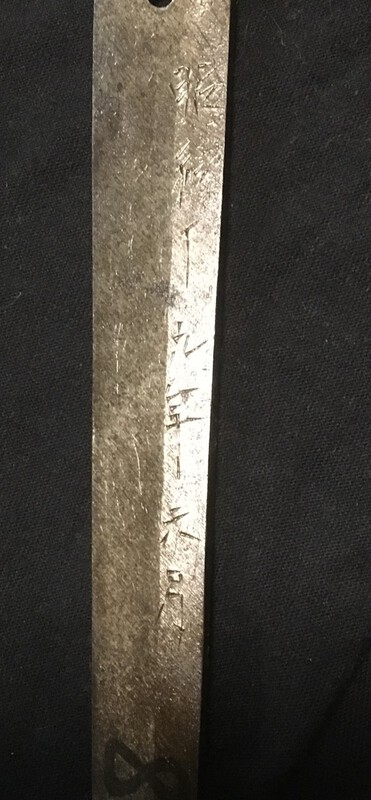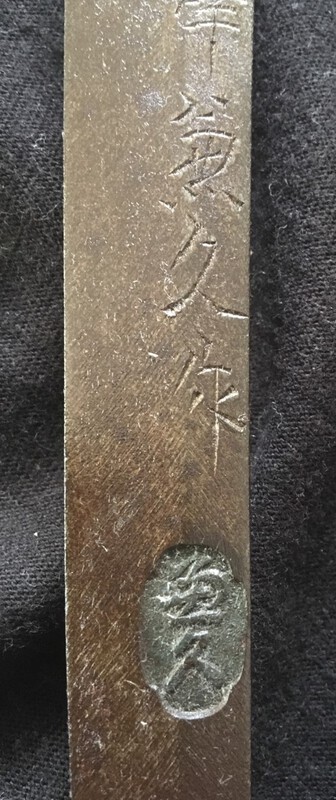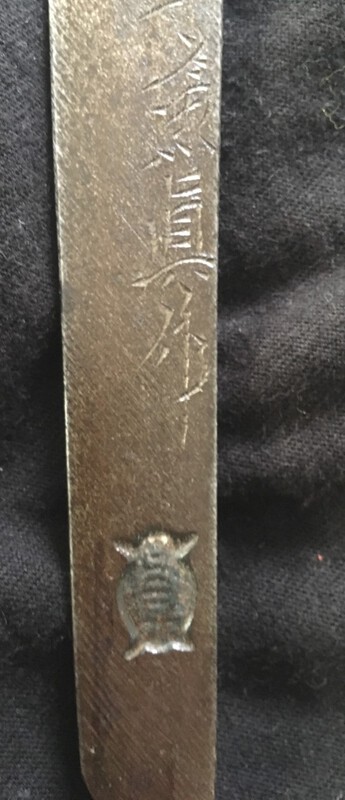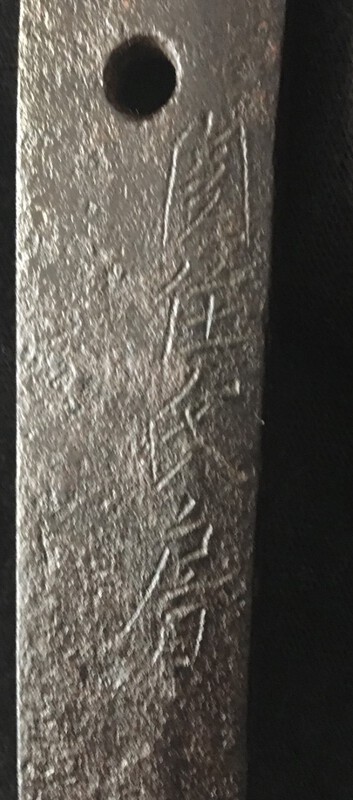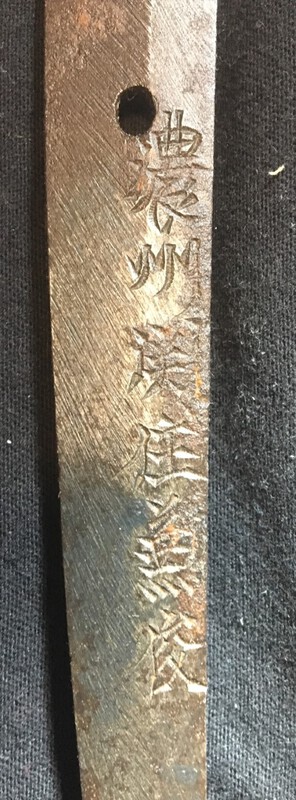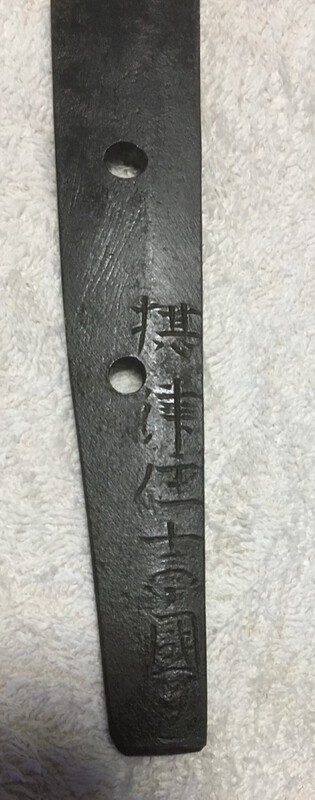Search the Community
Showing results for tags 'katana'.
-
Could I have some feedback on this mei please . I did find a mei on this site looked close, seems to be alot of copies around . 62.2 cm long small Katana in late war Kaigunto mounts Thank you Geoff
-
At wars end, Japanese swords were surrendered with the promise that the sword would be returned to the owner at some time in the future. Of course this never happened, and many swords souvenired were taken with surrender tags attached. Tags took many forms, and it would be historically interesting to see what exists today. My contribution is a piece of silk cloth torn into a strip, written on and tied onto the hanger ring. Would be great to see other examples, and translations if possible.
-
When you get a new sword and hope it isn't monkeyed around with, finding matching assembly numbers on the blade and fittings, makes you feel good about it.
-
Fake blade, etched pattern The post is edited to discuss the koshirae only. Dear All, Greetings from Canada! I am new and all my limited information about Nihonto are from internet. Please share your thoughts , knowledge and comment. The koshirae looks elegant and concise. All fittings have a lot of Chinese characteristics. Red colored rayskin scabbard with 9 bats means "hong fu shou qi tian" ,"洪福壽齊天"in Chinese. The bat is not a simple bat, it has a longevity head, and a hidden monkey face, combines auspicious meanings. The tusba has a "Lou han" who tames the tiger without a fight. Maybe the highest honor for a warrior. Please note the philosophy here. Both ends use horn material. The handle end has a white though line, means the blade is a sharp one,you can cut through your enemy.The scabbard end has a short white line, means the opponent can not cut you through. There are willow strips decorated on the outside of the handle and the scabbard, which are rare to me. The menuki on the handle also has a nice meaning: triple dragon courage,"三聯龍膽" in Chinese. So, the blade is fake, the red rayskin koshirae seems pretty good, but a real koshirae can not protect a fake blade. Again, please share your thoughts , knowledge and comment. Thanks in advance.
-
Hello everyone, I came into possession of this blade recently and would greatly appreciate input from more experienced collectors. I’m not sure how feasible it is to do so, but if the sword could be identified to a general time period and region/style of make that would be ideal. I’m already aware of the bad quality ato-bori and the ware cracks and suspect this is why it was cheap. To my inexperienced eyes, the hamachi seems worn, and the nagkago has heavy patina, which makes me think that it’s fairly old and been polished several times. The Hamon looks like suguha and the Hada seems to have masme and some type of wood (komokume?) characteristics, but as I said I’m inexperienced and could be completely wrong about all of this. Also it might be due to general inexperience but it seems as if the angle and type of incident light affects how prominent the different Hada patterns are. I had read that Yamato style blades were produced in large numbers as arsenal weapons during the sengoku period and most were unsigned. Is it at all possible that I’m looking at one such example? Thank you again for everyone’s help,
-
Hey everyone, I have another blade here to share. It appears to have an o-kissaki. I believe the patina on the nakago points to it being koto in age. Here are the measurements: Nagasa: 27 inches or 692mm (the measuring tape was not really cooperating and stretching in the heat!) Sori: .8525 inches or 21.65mm Width at Habaki: 1.04 inches or 26.52mm Kissaki Length: 1.6 inches or 40.64mm Overall Length: 33 inches or 838.2mm The blades overall hamon pattern is obscured but it appears to a form of notare but I cannot honestly say to what degree or if it is simply a more complex pattern hidden by the lack of polish. The blade seems to be healthy enough to receive a new polish and I do not detect any fatal flaws; the yokote is intact as well. I think this blade is on its first polish but someone may have taken a buffing wheel or something similar to it as the metal has a 'slicked' appearance to it. I am also unable to remove the habaki as it is firmly rooted on and appears to already have taken a beating from a previous owner attempting to remove it. Opinions of all kinds are welcome. I bow to the knowledge of my betters! Thanks guys!
-
Dear all, I am looking for a Japanese sword in good condition (with its original dimensions, thus not over polished) from the Bakumatsu period along with its original koshirae. I need a textbook example, that is to say that the nakago must be quite long (well over 20 cm) and the nagasa must be over 75 cm. The sword must be signed and dated between 1854 and 1864. I am not looking for a specific or well known swordsmith, just an average to good one. The sword I am looking for must have been made for real combat. Usually, those swords are found with a shallow sori can be quite heavy and rather clumsy to yield, nevertheless, some are quite elegant (both type welcomed). If you have one for sale, please contact me by PM.
-
Dear nihonto connoisseurs! Could you please help me with the documents translation and mei identification? Unfortunately, I do have only low-resolution images of the sword passport (tōrokushō) and nakago. Here they are The seller interprets this mei as ‘izumi-no-kami-kanesada’ but I would strongly doubt in this. Also I’m not sure that the tōrokushō data really correspond this sword. All Kanesadas’ signatures that I have found were dissimilar to this mei. When trying to read the mei using hiragana/katakana symbols in google translate, the only reasonable variant I find is Noriyuki. Maybe the mei is just corrupted here?
-
Hello i have seen this Blade online. Any thoughts in it?
-
Hi all, Not sure if a question like this even belongs here but while dreaming of well polished swords I saw this absolute rust bucket somewhere. I've got no experience whatsoever with neglected nihonto, so hopefully someone with more experience can help me out here. The shirasaya (is it??) looks very iffy, I've never seen it done like this. What is this? A 'fake' or something very unusual? The blade itself I also have no idea about. It might be genuine but it is in absolutely pitiful state. So even if this one were the real deal, would it even be possible to bring this back to a state where people would want to look at it? These pictures are unfortunately all I have. Best, Mark
- 12 replies
-
- fake
- restoration
-
(and 1 more)
Tagged with:
-
How many military sword collectors have Kanbun blades? Here are two Kanbun (1660-1670) swords compared to the usual curvature example. Swords of this period were almost straight. Thought it may be interesting to show the difference.
-
Hey guys, I know things have been a bit slow around here with people selling/showing/talking about blades so I thought I'd post another one of my blades. I think this one is either koto or shinto and appears to have Sukesada-like qualities to it. I am just looking for general opinions. I think the blade's overall condition is poor with the polish being non-existent but the blade itself is very healthy so likely only on its first or second polish. It is mumei but I think would be a good candidate to be restored. And I've heard people say you can remove active rust with antler, but what kind and quality of antler? I also have a rather worn tsuba that I've no proper knowledge of; it came with it and fits rather well.. I will post that in tosogu later! Opinions are appreciated!
-
Would like some information on those names . Should they be on separate peices of the same sword... I am really new to this please don't hate on me ....my sincere apologies for my ignorance towards proper knowledge of my sword or any meanings of the mei
-
So I believe this is an early type 98 gunto, but please correct me if I am wrong. the fuchi seems slightly taller than on any of the comparable swords I can find, and I can't seem to find anything with this type of engraving, all others seem to have the same alternating leaf design. the style of tsuba is what leads me to beleive it is an early example type 98. the tang has only that single stamp which leads me to believe it was probably a mass produced blade. it seems also that this is not the original handle wrap(ito) as the material, wrapping style, and workmanship don't seem to match up. if anyone can tell me anything more about this sword I would really appreciate it!
-
Hey everyone! I have another blade here from my collection. I've had this one for a while now, but the same day I took pictures of that wakizashi, I took a few of this katana. Its a pretty interesting piece, so again, I'll let the pictures and measurements do the talking: Nagasa: 26 1/8" Sori: 5/8" Nakago length: 7 1/4" My asks are: apparent age, school, any other useful info you can clean from my crappy photos! One other thing: the habaki is wedged tightly on and because its gold-foil, I am afraid that trying to remove it would damage it. Opinions welcome!
-
Is this Kanetsuna Saku, or Kanetsune Saku? Also, is this a Bunmei sword of around 1460 to 1490? Help would be gratefully appreciated.
-
This is a Showa Norinaga. I am struggling a bit with the date. Looks like 1944, but I am confused about the rest. June, 1944?
-
St. Croix Blades currently has 12 Swords listed on eBay. Here is the link: https://www.ebay.com/sch/m.html?_odkw=&_ssn=stcroixblades&item=362949686568&_osacat=0&_from=R40&_trksid=p2046732.m570.l1313.TR12.TRC2.A0.H0.Xjapanese+sword.TRS0&_nkw=Japanese+sword&_sacat=0 You don't have to purchase on eBay. If you see something you like, let me know and we'll arrange a direct purchase. Thank you. --Matthew Brice
-
-
-
-
Help with this Kanbun Yoshikuni would be appreciated. Is it Seshu Ju? And what is the English translation, thanks.
-
This maybe a bit like asking what is your favourite colour. But very early on in my collection and study of shin-gunto, I made a list of what sword smiths I thought would be a good representative of the period, that were available, and wouldn't break the bank. I used John Slough's book and other research material, and set my sights on 10 swords that make up a reasonable and affordable representative sample, one that most people would know, and be a good basis for future growth to maybe better traditionally made blades. So here goes...... 1. Kanenori. 2. Teruhide. 3. Kanezane. 4. Emura. 5. Nagamitsu. 6. Masafusa (kobuse). 7. Kanemichi. 8. Koa Isshin Mantetsu. 9. Masayuki. 10. Masakiyo. So ok, these were in retrospect maybe not the greatest choices, but they were relatively easy to find good examples, and were not overly expensive. This formed the basis of an ever expanding collection, and a lot was learned. My question is, what do other collectors think of my choices, what would you add or subtract from the list (remembering affordability) for a beginner, and do others hunt down swords or pick up what comes along?

